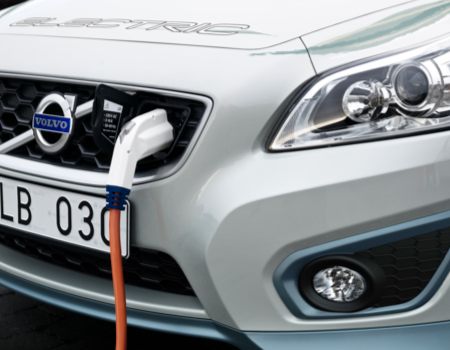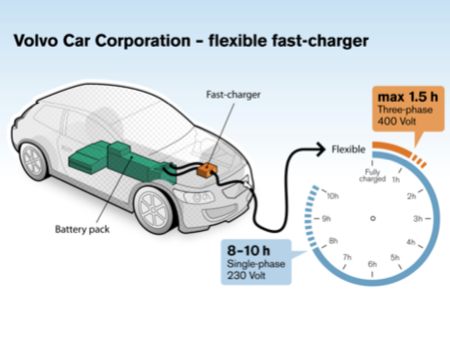Those of you disappointed with how long it takes to recharge your new electric or plug-in vehicle, relief may be right around the corner.
The Volvo Car Corporation has announced it is testing a new “fast-charger” for electric cars that will significantly cut recharging times to a stunning 1.5 hours, some six times faster than units currently in use in EVs on the road today.
The new charger is going to be installed and tested on a number of Volvo C30 electrics and utilizes a three-phase outlet with 32A to charge fully in the 90 minutes or deliver 80 km (about 50 miles) from a 30-minute charge.
“We know that short recharging times and extensive operating range are a necessity for potential electric car consumers. The fast-charging unit helps cure what is known as ‘range anxiety’ since the car can be more easily recharged during the day. And even if you don’t have enough time for a 1.5-hour charge, plugging in for just 30 minutes will give you enough power for another 80 kilometres of driving,” says Lennart Stegland, Vice President Electric Propulsion Systems, Volvo Car Corporation.
Current charging systems operate on a single-phase circuit of 110- or 220-volts with recharge times as long as 10 hours depending on available power. And it goes without saying the infrastructure would have to be modified to allow for the three-phase outlet installations.
Volvo’s new fast-charger is a 22 kW unit and is small enough to be fitted into an electric car. It is the world’s first three-phase unit and will operate on a single-phase supply as well.
“The user can ‘top up’ the battery pack with electricity one or more times during the day. This means that the total daily range is significantly extended, yet with the same low operating cost compared to a car with a conventional power train,” says Lennart Stegland. “Giving customers more usable hours each day means that electric cars become more viable as a commercial proposition, in both the private and public sectors.”


